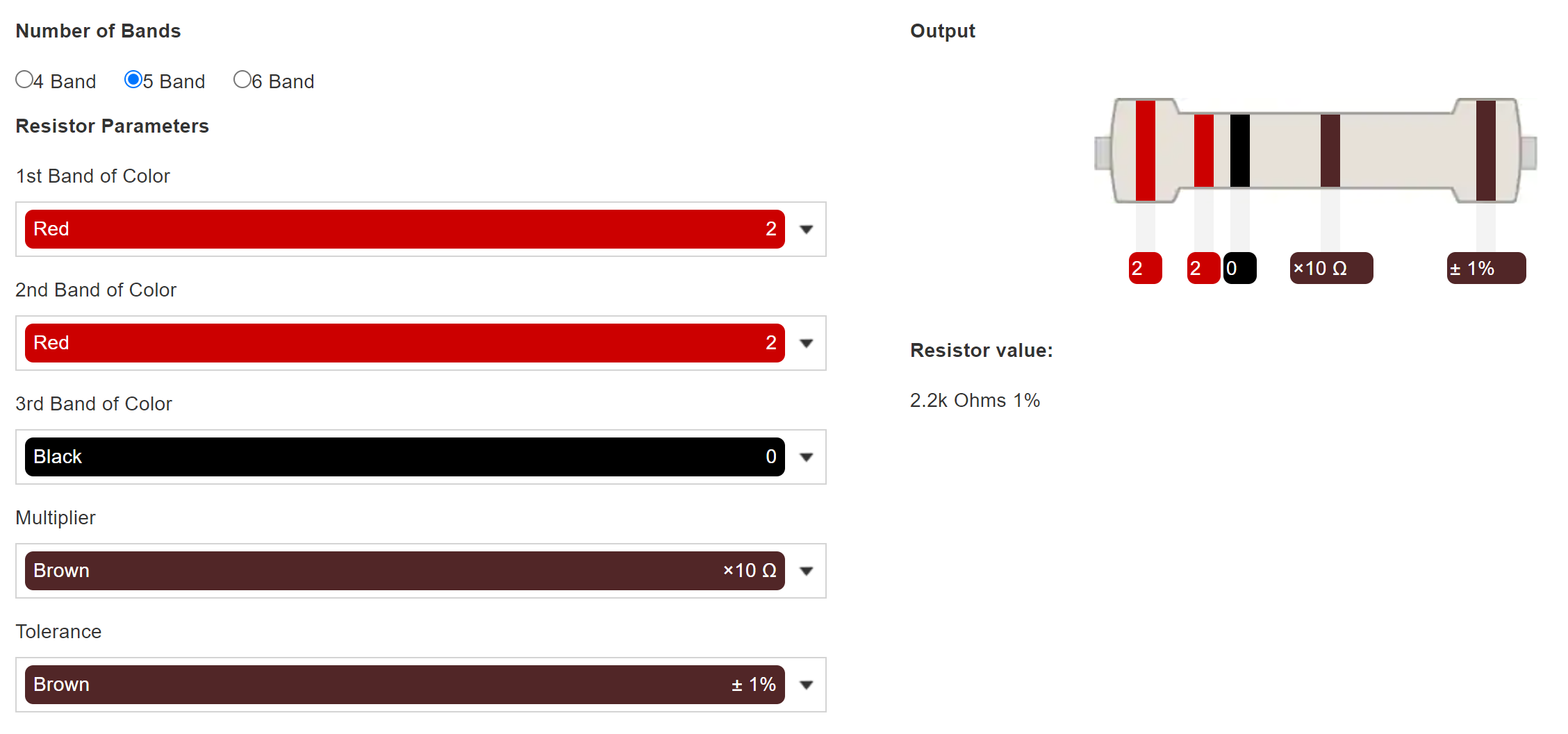How to Read a 2.2K Resistor: Color Code, Identification, and Practical Use
How to Identify 2.2K Resistor: Color Code, Circuit and Applications
If you're working with electronics, you need to know how to read resistors. 2.2k ohm resistor: Probably the most used resistor in circuits for signal control, voltage division, and current limiting, among many other applications. But to use it properly you will need to know how to read the 2.2k resistor color code and determine what that means.

In this post, we're going to cover everything that you need to know about 2.2k resistors: what they are, how to read them from their color bands, and where they're commonly found in practice in electronics.
What Is a 2.2K Resistor?
A resistor is a passive component that limits electrical current in a circuit. The term "2.2k" means the resistor has a resistance of 2,200 ohms. The "k" stands for kilo-ohms (1k = 1,000 ohms).So, 2.2k ohm resistor is another way of saying "2,200 ohm resistor."
It's commonly used in audio circuits, LED current limiting, timing applications, and analog signal conditioning. The balance of moderate resistance and compact size makes it a go-to choice for many engineers and hobbyists.
Why Use Color Codes?
Most resistors are too small to print numbers on, so manufacturers use color bands instead. Learning how to read resistors using these color bands allows you to quickly identify the value without needing special equipment.Each color corresponds to a specific digit or multiplier based on a standardized system.
2.2K Resistor Color Code (4-Band)
The standard 4-band color code for a 2.2k resistor is:- Red (2)
- Red (2)
- Red (×100)
- Gold (±5% tolerance)
- First digit: 2
- Second digit: 2
- Multiplier: 100
- Value: 22 × 100 = 2,200 ohms (2.2kΩ)
- Tolerance: ±5%
If the fourth band is Silver, the tolerance is ±10%. If it's Brown, the tolerance is ±1%.

2.2K Resistor Color Code (4-Band)
2.2K Resistor Color Code (5-Band)
For resistors with tighter tolerances (e.g., ±1% or ±0.1%), a 5-band code is used. In this case, the bands might be:- Red (2)
- Red (2)
- Black (0)
- Brown (×10)
- Brown (±1% tolerance)
- First digit: 2
- Second digit: 2
- Third digit: 0
- Multiplier: 10
- Value: 220 × 10 = 2,200 ohms (2.2kΩ)

2.2K Resistor Color Code (5-Band)
How to Read Resistors Step-by-Step
To generalize the process of identifying a resistor's value:1.Hold the resistor so the tolerance band (usually gold or silver) is on the right.
2.Read the color bands from left to right.
3.Use a resistor color code chart:
Black = 0
Brown = 1
Red = 2
Orange = 3
Yellow = 4
Green = 5
Blue = 6
Violet = 7
Gray = 8
White = 9
4.Apply the formula:
For 4-band: (1st digit)(2nd digit) × multiplier
For 5-band: (1st digit)(2nd digit)(3rd digit) × multiplier
Applications of 2.2K Resistors
You'll find 2.2k resistors in a wide range of everyday electronics. Some examples include:LED circuits: It helps limit the current flowing into the LED to avoid damage.
Audio amplifiers: Used for gain control or input impedance setting.
Voltage dividers: Together with another resistor, it can step down voltage to a desired level.
Arduino projects: Commonly used for analog sensors, pull-up/pull-down resistors, and input protection.
Transistor biasing: Helps set a stable operating point for transistors in amplifier circuits.
Tips for Choosing the Right 2.2K Resistor
Tolerance Matters: For precise applications, go for 1% tolerance (brown band at the end). For general usage, 5% is sufficient.Wattage Rating: For most small electronics, a ¼ watt or ½ watt resistor is enough. High-power circuits might need 1W or more.
Temperature Coefficient: If operating in varying temperatures, consider metal film resistors for better stability over carbon types.
Related Terms You May Encounter
2.2k resistor vs 2200 ohm: These are the same, just different notations.2k2 resistor: Sometimes written this way to avoid confusion with decimal points in printed text.
2.2k ohm resistor equivalent: You can combine resistors to reach 2.2k (e.g., two 1.1k ohm resistors in series).
Mastering how to read resistors and recognizing a 2.2k resistor color code is foundational knowledge in electronics. Whether you're fixing a circuit or building one from scratch, this skill ensures you select the correct components, preventing circuit failure or performance issues.
So the next time you see a resistor marked Red-Red-Red-Gold, you'll know-without hesitation-that you're holding a reliable 2.2k ohm resistor, ready to bring balance and function to your project.


